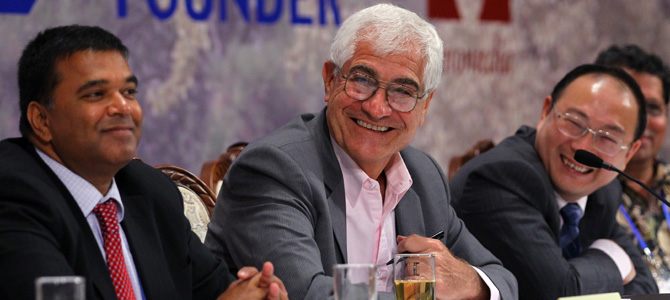
China's first high-resolution, remote-sensing satellite for civilian use, Ziyuan 3, was put into service on Monday, marking a breakthrough in the country's drive to map the Earth from outer space.
Launched on Jan 9, the satellite was delivered to its primary subscriber, the National Administration of Surveying, Mapping and Geoinformation, on Monday.
"Ziyuan" is Chinese for "resources".
"The satellite shows that China's remote-sensing satellite technology has reached advanced levels," said Hu Yafeng, deputy head of the State Administration of Science, Technology and Industry for National Defense.
Unlike the Ziyuan?1 and?2 satellites, which produce only two-dimensional images, the new satellite can produce three-dimensional imagery thanks to three cameras attached to it at different angles, according to Cao Hailing, the satellite's designer with the China Aerospace Science and Technology Corp.
The images' resolution is 2.1 meters, better than the previous resolution of 3 meters, she said.
The orbiter also has a multispectral camera that helps look for mineral resources, which can produce imagery with a resolution of 6 meters, she said.
The satellite can transmit data at a speed four to five times of previous satellites. And for the first time, a low-Earth-orbit remote-sensing satellite's lifespan is now five years, up from three years, according to a news release provided by the State Administration of Science, Technology and Industry for National Defense.
Officials said this satellite will eliminate the country's surveying and mapping industries' dependence on foreign satellites for high-resolution images.
A remote-sensing industry insider said, on condition of anonymity, that the country bought a lot of high-resolution images from abroad for land surveying, railway and road design and other purposes.
For example, land surveying needs remote-sensing imagery to find out whether there are illegal buildings on a certain lot of land.
"Illegal buildings may cover an area of only several hundreds square meters, and satellite images without a high resolution cannot find them," he said.
"Some of China's remote-sensing satellites can also produce images with a resolution of 3 meters, but the images' other technical standards, such as the image sharpness, cannot compete with some foreign commercial satellites," he said.
Experts said the new satellite can compete with its foreign counterparts, which currently dominate the country's high-resolution remote-sensing and mapping market.
"If domestic satellites can produce visual data of the same quality as their foreign counterparts, we will surely use the cheaper domestic products," he said.
Officials also said the satellite will enable China to produce full-coverage, high-resolution imagery of the country's coastlines and islands, and monitor and update geographic data there.
During its trial operation, the Ziyuan 3 satellite collected visual data of 450,000 square kilometers in the South China Sea, including Huangyan Island, over which the Philippines also claims sovereignty, said Feng Xianguang, director of Satellite Surveying and Mapping Application Center under the National Administration of Surveying, Mapping and Geoinformation.
The satellite will also aid the country's natural-disaster prevention, agriculture development, water-resource management and urban planning, the administration said.
In the coming years, at least two more high-resolution remote-sensing satellites will be launched, said Li Pengde, deputy head of the National Administration of Surveying, Mapping and Geoinformation.
They will form a satellite constellation that collects real-time data of any point on Earth, Li said.
Earlier this year, the administration announced that a national geographical conditions monitoring database will be built by the end of 2015 to use remote-sensing satellite mapping and other technology.
xindingding@chinadaily.com.cn


 Washington to remain focused on Asia-Pacific
Washington to remain focused on Asia-Pacific RQFII target blue chips amid bear market
RQFII target blue chips amid bear market Australian recall for top two exporters
Australian recall for top two exporters China fears new car restrictions
China fears new car restrictions